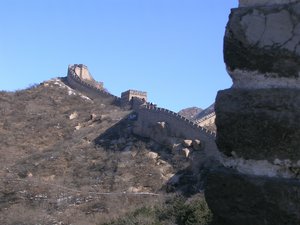- published: 03 Oct 2012
- views: 6157
-
remove the playlistWater_board_(netherlands)
- remove the playlistWater_board_(netherlands)
- published: 01 Feb 2016
- views: 234
- published: 19 Nov 2014
- views: 8270
- published: 10 Nov 2014
- views: 934
- published: 07 May 2015
- views: 1094
- published: 15 Jun 2009
- views: 105310
- published: 17 Sep 2014
- views: 151

Water board (Netherlands)
Dutch water boards (Dutch: waterschappen or hoogheemraadschappen) are regional government bodies charged with managing water barriers, waterways, water levels, water quality and sewage treatment in their respective regions. These regional water authorities are among the oldest forms of local government in the Netherlands, some of them having been founded in the 13th century.
Around 26 percent of the area of the Netherlands is at or below sea level and several branches of the Rhine-Meuse-Scheldt delta run through this relatively small country. Historically there always was a good deal of coastal and river flooding. Flood control in the Netherlands is a national priority, since about two thirds of the country is vulnerable to flooding, while at the same time it is one of the most densely populated countries on Earth. Natural sand dunes and man-made dikes, dams and floodgates provide defense against storm surges from the sea. River dikes prevent flooding of land by the major rivers Rhine and Meuse, while a complicated system of drainage ditches, canals and pumping stations (historically: windmills) keep the low-lying parts dry for habitation and agriculture. Water boards are independent local government bodies responsible for maintaining this system.
This article is licensed under the Creative Commons Attribution-ShareAlike 3.0 Unported License, which means that you can copy and modify it as long as the entire work (including additions) remains under this license.
- Loading...

-
 77:30
77:30Sweet and Salt: Water and the Dutch | Tracy Metz
Sweet and Salt: Water and the Dutch | Tracy MetzSweet and Salt: Water and the Dutch | Tracy Metz
Tracy Metz, co-author of Sweet and Salt: Water and the Dutch, spoke at the College of Design about the ways changing climate is challenging traditional methods of water management in the Netherlands. Metz was a Harvard Loeb Fellow in 2007 and a member of the 2008 Delta Commission, advising the government on water safety. She was previously a guest scholar at the Netherlands Institute for Spatial Research and a member of the Council for Rural Areas, the independent advisory board to the ministry of Nature and Agriculture. October 1, 2012 http://design.umn.edu Presented in partnership by the the Department of Landscape Architecture, University of Minnesota College of Design, and Minneapolis Parks Foundation, with support from Meteek & Co. -
 13:49
13:49Sailing the Dutch water ways on board MS Prinses Christina
Sailing the Dutch water ways on board MS Prinses ChristinaSailing the Dutch water ways on board MS Prinses Christina
Sailing aboard MS Prinses Christina from Zaandam via Amsterdam, Volendam to Hoorn the Netherlands. Including video from Amsterdam, The MS Virginia, Volendam and Hoorn, Holland Facts: wikepedia.com JayeM Productions video website http://wpvideos.jayemproductions.nl/ -
 3:10
3:10CIrcle – Critical Infrastructures: case Waterland, The Netherlands
CIrcle – Critical Infrastructures: case Waterland, The NetherlandsCIrcle – Critical Infrastructures: case Waterland, The Netherlands
In January 2016, it was 100 years since several dike breaches caused a great flood in the Waterland region of The Netherlands. Water Board Hollands Noorderkwartier wanted to raise awareness for flood risk and flood impact. A flood scenario similar to the conditions in 1916 was used to analyse the effects on critical infrastructure networks and cascading effects between these networks. The Water Board wants to use the results to gain more knowledge on the interdependencies between important networks within their region and how society is dependent on them. -
 1:10
1:10Flood control pumps: Renovation of a pumping station in the Dutch polder
Flood control pumps: Renovation of a pumping station in the Dutch polderFlood control pumps: Renovation of a pumping station in the Dutch polder
Flood control is an important issue for the Netherlands as the largest part of its surface area is vulnerable to flooding. Water control boards are the independent local government bodies responsible for maintaining Flood Protection Systems. In the Dutch region of Overijssel the local Water Board governs the water in the Agricultural polders. One of their refurbishment projects concerns a pumping station built in the year 1933 which has been designated as a so called municipal monument. The project started with the installation of temporary pumping equipment, consisting of three new diesel-driven pump units from BBA Pumps. During the renovation these pumps will take over from the pumping station without any loss of capacity, and as such they will guarantee the correct water level. Total capacity over 100 m3/min (6000 m3/hour) Two BA300K D324 diesel driven pumps, which together account for a maximum of 46 m3/min, have both been set up next to a big 20” pump set, type BA-C500S11 D711 with a capacity of over 60 m3/min. The pumps have been connected to a modern operating system making it possible to automatically and independently start and stop them, depending on the volumes of water flowing in from the polders nearby. These super silent pump units can even continue working during the night, without causing any noise disturbance to the surrounding environment. The flood control pumps from BBA are very well suited to controlling water levels during heavy rainfalls and to prevent flooding, in addition to acting as a temporary pumping station. -
 4:06
4:06Nereda Dinxperlo, the Netherlands
Nereda Dinxperlo, the NetherlandsNereda Dinxperlo, the Netherlands
After an extensive comparison of options, Water Board Rijn en IJssel selected Nereda® for replacing their treatment facilities at Dinxperlo. The plant was implemented by Royal HaskoningDHV under a Design & Construct contract. This contract also includes the development of a water park that integrates the treatment works with attractive reed beds, ponds and greens. ^CM -
 3:45
3:45Nereda® in Dutch practice: Vroomshoop and Dinxperlo
Nereda® in Dutch practice: Vroomshoop and DinxperloNereda® in Dutch practice: Vroomshoop and Dinxperlo
In 2012, King Willem-Alexander opens the first Dutch municipal Nereda wastewater treatment plant in the town of Epe. Since then, several water boards have embraced the Nereda technology as an innovative treatment process for the wastewater they have to purify. Every water board applies the technology in its own way. The treatment plant in Vroomshoop is a hybrid plant with a buffer. The plant in Dinxperlo is a greenfield project. Both reactors have a rectangular shape and an underground piping system in contrast to the plant in Epe that consists of three round tanks with a gallery on the outside for the pipework. ^CM -
 6:40
6:40Kitesurfing @Slufter, The Netherlands
Kitesurfing @Slufter, The Netherlands -
 1:51
1:51The Netherlands: Working Windmills
The Netherlands: Working WindmillsThe Netherlands: Working Windmills
300 years ago, half of what we know as The Netherlands was under water. Slowly, the former seabed was reclaimed and the Dutch went to work drying the ground with the country's leading natural resource - the wind. Over 1000 windmills, some still functioning, survive in the Netherlands today, reminding locals and tourists alike of the clever engine that powered the creation of this land. For more information on the Rick Steves' Europe TV series — including episode descriptions, scripts, participating stations, travel information on destinations and more — visit http://www.ricksteves.com. -
 3:04
3:04Just a random day at M&M; Stand Up Paddling Amsterdam, The Netherlands
Just a random day at M&M; Stand Up Paddling Amsterdam, The Netherlands -
 8:18
8:18Interview Jaap van Manen, Board Member at Dutch Central Bank (DNB)
Interview Jaap van Manen, Board Member at Dutch Central Bank (DNB)Interview Jaap van Manen, Board Member at Dutch Central Bank (DNB)
Jaap van Manen is member of the non-executive board at the Dutch Central Bank (DNB), chairman of the monitoring committee for Corporate Governance Code in the Netherlands, chairman of the supervisory board at Evides, a major water utility in the Netherlands. What are the priorities in his field?
-

Sweet and Salt: Water and the Dutch | Tracy Metz
Tracy Metz, co-author of Sweet and Salt: Water and the Dutch, spoke at the College of Design about the ways changing climate is challenging traditional methods of water management in the Netherlands. Metz was a Harvard Loeb Fellow in 2007 and a member of the 2008 Delta Commission, advising the government on water safety. She was previously a guest scholar at the Netherlands Institute for Spatial Research and a member of the Council for Rural Areas, the independent advisory board to the ministry of Nature and Agriculture. October 1, 2012 http://design.umn.edu Presented in partnership by the the Department of Landscape Architecture, University of Minnesota College of Design, and Minneapolis Parks Foundation, with support from Meteek & Co.
published: 03 Oct 2012 -

Sailing the Dutch water ways on board MS Prinses Christina
Sailing aboard MS Prinses Christina from Zaandam via Amsterdam, Volendam to Hoorn the Netherlands. Including video from Amsterdam, The MS Virginia, Volendam and Hoorn, Holland Facts: wikepedia.com JayeM Productions video website http://wpvideos.jayemproductions.nl/
published: 25 Jul 2013 -

CIrcle – Critical Infrastructures: case Waterland, The Netherlands
In January 2016, it was 100 years since several dike breaches caused a great flood in the Waterland region of The Netherlands. Water Board Hollands Noorderkwartier wanted to raise awareness for flood risk and flood impact. A flood scenario similar to the conditions in 1916 was used to analyse the effects on critical infrastructure networks and cascading effects between these networks. The Water Board wants to use the results to gain more knowledge on the interdependencies between important networks within their region and how society is dependent on them.
published: 01 Feb 2016 -

Flood control pumps: Renovation of a pumping station in the Dutch polder
Flood control is an important issue for the Netherlands as the largest part of its surface area is vulnerable to flooding. Water control boards are the independent local government bodies responsible for maintaining Flood Protection Systems. In the Dutch region of Overijssel the local Water Board governs the water in the Agricultural polders. One of their refurbishment projects concerns a pumping station built in the year 1933 which has been designated as a so called municipal monument. The project started with the installation of temporary pumping equipment, consisting of three new diesel-driven pump units from BBA Pumps. During the renovation these pumps will take over from the pumping station without any loss of capacity, and as such they will guarantee the correct water level. To...
published: 19 Nov 2014 -

Nereda Dinxperlo, the Netherlands
After an extensive comparison of options, Water Board Rijn en IJssel selected Nereda® for replacing their treatment facilities at Dinxperlo. The plant was implemented by Royal HaskoningDHV under a Design & Construct contract. This contract also includes the development of a water park that integrates the treatment works with attractive reed beds, ponds and greens. ^CM
published: 10 Nov 2014 -

Nereda® in Dutch practice: Vroomshoop and Dinxperlo
In 2012, King Willem-Alexander opens the first Dutch municipal Nereda wastewater treatment plant in the town of Epe. Since then, several water boards have embraced the Nereda technology as an innovative treatment process for the wastewater they have to purify. Every water board applies the technology in its own way. The treatment plant in Vroomshoop is a hybrid plant with a buffer. The plant in Dinxperlo is a greenfield project. Both reactors have a rectangular shape and an underground piping system in contrast to the plant in Epe that consists of three round tanks with a gallery on the outside for the pipework. ^CM
published: 07 May 2015 -

-

The Netherlands: Working Windmills
300 years ago, half of what we know as The Netherlands was under water. Slowly, the former seabed was reclaimed and the Dutch went to work drying the ground with the country's leading natural resource - the wind. Over 1000 windmills, some still functioning, survive in the Netherlands today, reminding locals and tourists alike of the clever engine that powered the creation of this land. For more information on the Rick Steves' Europe TV series — including episode descriptions, scripts, participating stations, travel information on destinations and more — visit http://www.ricksteves.com.
published: 15 Jun 2009 -

-

Interview Jaap van Manen, Board Member at Dutch Central Bank (DNB)
Jaap van Manen is member of the non-executive board at the Dutch Central Bank (DNB), chairman of the monitoring committee for Corporate Governance Code in the Netherlands, chairman of the supervisory board at Evides, a major water utility in the Netherlands. What are the priorities in his field?
published: 17 Sep 2014
Sweet and Salt: Water and the Dutch | Tracy Metz
- Order: Reorder
- Duration: 77:30
- Updated: 03 Oct 2012
- views: 6157
- published: 03 Oct 2012
- views: 6157
Sailing the Dutch water ways on board MS Prinses Christina
- Order: Reorder
- Duration: 13:49
- Updated: 25 Jul 2013
- views: 188
CIrcle – Critical Infrastructures: case Waterland, The Netherlands
- Order: Reorder
- Duration: 3:10
- Updated: 01 Feb 2016
- views: 234
- published: 01 Feb 2016
- views: 234
Flood control pumps: Renovation of a pumping station in the Dutch polder
- Order: Reorder
- Duration: 1:10
- Updated: 19 Nov 2014
- views: 8270
- published: 19 Nov 2014
- views: 8270
Nereda Dinxperlo, the Netherlands
- Order: Reorder
- Duration: 4:06
- Updated: 10 Nov 2014
- views: 934
- published: 10 Nov 2014
- views: 934
Nereda® in Dutch practice: Vroomshoop and Dinxperlo
- Order: Reorder
- Duration: 3:45
- Updated: 07 May 2015
- views: 1094
- published: 07 May 2015
- views: 1094
Kitesurfing @Slufter, The Netherlands
- Order: Reorder
- Duration: 6:40
- Updated: 12 Nov 2014
- views: 1907
The Netherlands: Working Windmills
- Order: Reorder
- Duration: 1:51
- Updated: 15 Jun 2009
- views: 105310
- published: 15 Jun 2009
- views: 105310
Just a random day at M&M; Stand Up Paddling Amsterdam, The Netherlands
- Order: Reorder
- Duration: 3:04
- Updated: 01 Feb 2013
- views: 4009
Interview Jaap van Manen, Board Member at Dutch Central Bank (DNB)
- Order: Reorder
- Duration: 8:18
- Updated: 17 Sep 2014
- views: 151
- published: 17 Sep 2014
- views: 151
- Playlist
- Chat
- Playlist
- Chat

Sweet and Salt: Water and the Dutch | Tracy Metz
- Report rights infringement
- published: 03 Oct 2012
- views: 6157

Sailing the Dutch water ways on board MS Prinses Christina
- Report rights infringement
- published: 25 Jul 2013
- views: 188

CIrcle – Critical Infrastructures: case Waterland, The Netherlands
- Report rights infringement
- published: 01 Feb 2016
- views: 234

Flood control pumps: Renovation of a pumping station in the Dutch polder
- Report rights infringement
- published: 19 Nov 2014
- views: 8270

Nereda Dinxperlo, the Netherlands
- Report rights infringement
- published: 10 Nov 2014
- views: 934

Nereda® in Dutch practice: Vroomshoop and Dinxperlo
- Report rights infringement
- published: 07 May 2015
- views: 1094


The Netherlands: Working Windmills
- Report rights infringement
- published: 15 Jun 2009
- views: 105310

Just a random day at M&M; Stand Up Paddling Amsterdam, The Netherlands
- Report rights infringement
- published: 01 Feb 2013
- views: 4009

Interview Jaap van Manen, Board Member at Dutch Central Bank (DNB)
- Report rights infringement
- published: 17 Sep 2014
- views: 151
[VIDEO]: 10-Year-Old Autistic Boy In Coma After Being Set On Fire By' Friends'
Edit WorldNews.com 07 Oct 2016Collapse Of 'Moon Gate' Prompts Debate On Great Wall Of China Preservation
Edit WorldNews.com 06 Oct 2016Thailand Is Marking the Darkest Day In Its Living Memory
Edit Topix 06 Oct 2016At least 108 dead in Haiti from Hurricane Matthew; number expected to rise
Edit Boston Herald 06 Oct 2016[VIDEO]: Catturato! Italian Mafia Boss Found Hiding In Secret Room In House
Edit WorldNews.com 06 Oct 20162016 Beach Energy Ltd Corporate Governance Statement (Beach Energy Limited)
Edit Public Technologies 07 Oct 2016Domingo's LA Opera contract extended through 2021-22
Edit Rocky Mount Telegram 07 Oct 2016Domingo’s LA Opera contract extended through 2021-22
Edit The Seattle Times 07 Oct 2016Sturgeon to announce new Scots-Iceland tourism link
Edit BBC News 07 Oct 201620161007-Spicers Limited AGM NOM 2016 (Spicers Ltd)
Edit Public Technologies 07 Oct 2016Bizman held at Rajiv Gandhi International Airport, foreign currency worth Rs 40 lakh seized
Edit The Times of India 07 Oct 2016THT 10 years ago: PM strikes note of optimism
Edit The Himalayan 07 Oct 2016Notice of 2016 Annual General Meeting and Proxy Form (Beach Energy Limited)
Edit Public Technologies 07 Oct 2016Political gloves come off at Montco commissioners meeting
Edit Philadelphia Daily News 07 Oct 2016Supreme Court set to slap tough order on BCCI today
Edit The Times of India 07 Oct 2016NCA probing six suspects over Nama scandal
Edit Topix 07 Oct 2016Supreme Court slams BCCI's defiant attitude
Edit DNA India 07 Oct 2016Canexus Appoints David Collyer as Board Chair, Special Committee to Evaluate and Respond to Chemtrade's Hostile Takeover Bid (Canexus Corporation)
Edit Public Technologies 07 Oct 2016- 1
- 2
- 3
- 4
- 5
- Next page »








